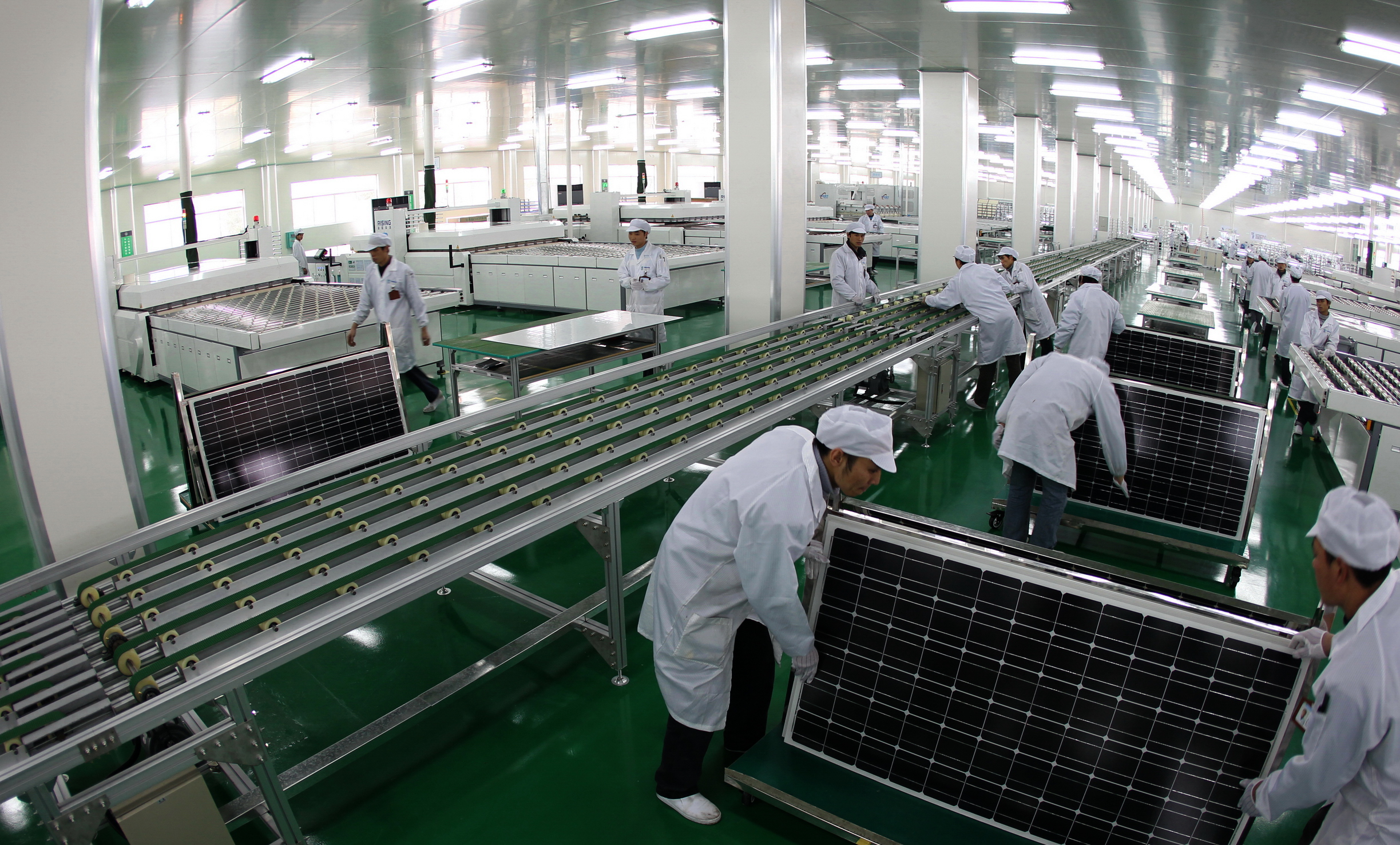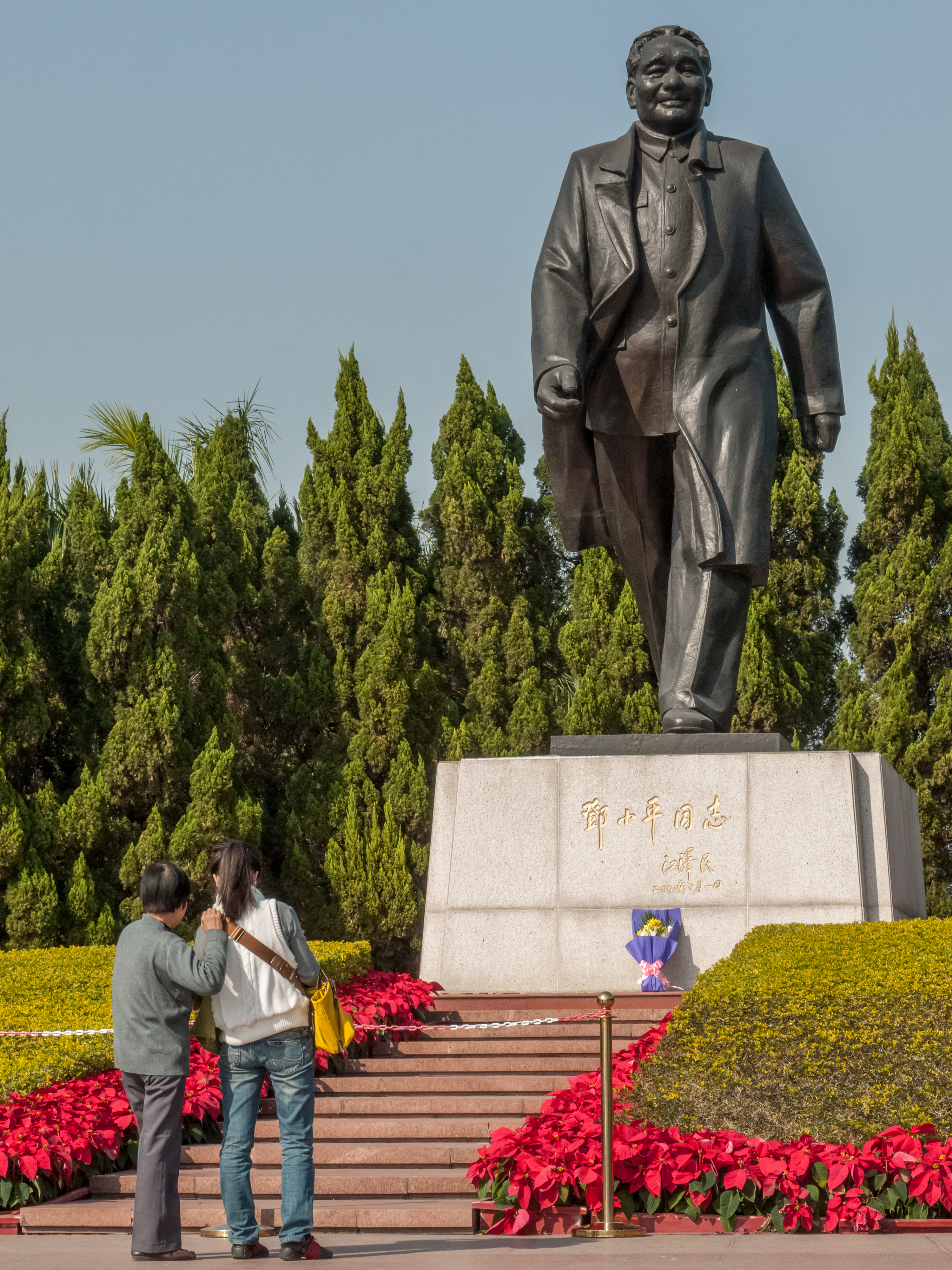China's Vice-Like Grip on Domestic Industry
Yet it thrives - How is this possible?

A Solar Panel Factory in Mainland China
Image:Gigasolar, CC BY-NC-ND 2.0, via Flickr
From the outside, China Looks like a free-market capitalist powerhouse only held back by strict capital controls and obsolete, paranoid, communist policies. And, to an extent, this is true, after all, what other system could encourage the incredible entrepreneurship evident in businesses such as BYD, DJI, Alibaba and Tencent.
However, this interpretation is missing a key point; the Chinese Communist Party has a deep understanding of free-market capitalism and its regime of financial control is carefully calibrated achieve the party’s two aims; spurring economic output whilst centralising power. And even at the level of individual firms, the government is heavily involved and invested in their growth
Don’t believe me? Here are some facts to back that up
– Chinese state-owned enterprises comprise ~50% of the market capitalisation of mainland Chinese stock exchanges
- 65% of the 1000 largest privately owned companies in China have partial ownership by a government entity.
This raises three key questions:
1. How do they achieve such control over the private sector?
2. How is this system so effective despite the inefficiencies of central planning?
3. What lessons should we take from this in the west?
Private Sector Control
The Chinese government retains control over the private sector through an extreme, yet elegant method, it simply has near total control over all the savings and investment in the economy.
What are these controls specifically?
1. Individuals are restricted from converting more than ~$50,000 worth of Chinese currency per year.
2. Only a handful of firms are allowed to invest in foreign assets.
3. Non-Chinese Nationals are barred from buying Chinese stocks.
These controls force Chinese people to save through a domestic vehicle, this is where the state-owned banks come in. Because of their near-total monopoly in offering deposits, state banks can get away with only offering savers incredibly low interest rates. For example, currently, The the Industrial and Construction Bank of China is only offering a return of 0.95% on a 1-year fixed deposit.
Chinese savers own huge amounts of deposits at these banks, although this is a raw deal for the savers it is fantastic for the government, they have access to billions in savings can determine the allocation of this money in the form of loans at a policy level, with profitability being a secondary consideration.
the low interest rate on savings allowing the banks in turn to offer extremely cheap loans to both state-run and private businesses they favour and make a large spread giving loans out to retail clients, the profits of which can be ploughed back into government projects.
As a result, Chinese private firms rise and fall depending on their alignment with government industrial policy because of the preferable access to loans and subsidies it provides. Notable recent focuses are the photovoltaic (solar panel) and electric vehicle sector.
How is this Semi-Planned Economy efficent?
A. The State Sector
Unlike the soviet system where a price mechanism just didn’t exist and production was determined by quotas, the Chinese state has clearly now internalised arguably the two most important mechanisms for efficiency into its state sector:
1. Encouraging Competition
2. Exploiting Economies of Scale
In the 80s, under Deng Xiaoping’s reforms, state industries were incorporated and went from following quotas to being profit-driven entities with their majority-stake shareholders being the state itself.

A Statue of Deng Xiaoping in Lianhuashan Park in Shenzen
Image:Ermell, CC BY-SA 4.0, via Wikimedia Commons
Most surprisingly, in this process, despite ownership not changing hands, large state monopolies were broken up. For example, the electricity ministry was into seven separate generation and grid companies and the telecoms ministry was broken up into three rival firms.
In other cases, small, geographically disparate and inefficient firms were allowed to go bankrupt, sold off, or consolidated into more efficient, viable entities. By allowing market forces to determine the fate of state-owned firms, the Chinese state conceded that capitalism was a more efficient structure than central planning, even within the state-owned sector
Recently, this has gone even further, more and more state-controlled enterprises in China have introduced employee stock ownership plans to align worker’s incentives with profitability.
B. The Private Sector
The private sector flourishes in China largely because of an advantageous and stable environment created for exporting firms under the communist party.
The Chinese government has carefully cultivated export-led economic growth through exchange rate manipulation since its accession to the WTO. All foreign transactions pass through the State Administration of Foreign Exchange which converts currency at a managed and undervalued exchange rate. This artificial weakness in the Yuan makes Chinese goods competitively cheap internationally.
The weak yuan also fuels investment from western companies such as apple, which ploughed Billions into manufacturing infrastructure and since 2008 trained 28 million workers – creating valuable expertise within China. This allowed, over time for Chinese domestic firms to enter the same industries as existing multinationals with a deep domestic talent pool to choose from a developed supply chain to adjacent industries.
This Strategy, consciously followed or not, has been hugely effective for developing Chinese industry in high value-added sectors - and helped by historically poor IP enforcement.
On top of this, the fact that businesses in China largely rely on business loans issued by state-run banks mentioned previously, means that Chinese businesses are remarkably invulnerable to speculative flows of money. During the Asian financial crisis in 1998, when South Korea, Japan and Singapore fell into a recession, output in China grew at a rate of 9%.
What Can We Learn From This In The West?
Although effective in China, capital controls and large public ownership of major industry is not viable in the west, especially the UK for several reasons.
1. China’s initial ownership of state assets was the result of a socialist revolution – something unlikely in the UK, at least for the moment.
2. Our financial services sector would be decimated by extensive capital controls and restrictions on foreign nationals
In my opinion the key lessons are these:
If even a repressive, communist country can recognise the usefulness of and successfully implement price mechanisms in their state-owned enterprises, then we should do the same. Nationalised industries such as health, education and those under consideration in the UK (Energy and rail), should be formed in a structure that promotes competition and aligns incentives with the outcomes we want to see in society.
Using savings – Western countries have huge amounts of savings that are often ploughed into investments abroad. If the government wants to spur growth in British businesses and address issues in certain sectors, they could introduce a regulation to mandate that a small proportion of domestic savings must be invested in UK stocks or special fixed-term bank deposits which lend exclusively to British business. Depending on the government’s focus at the time, they could make these funds available to specific industries such as clean energy, real estate construction or infrastructure developers.